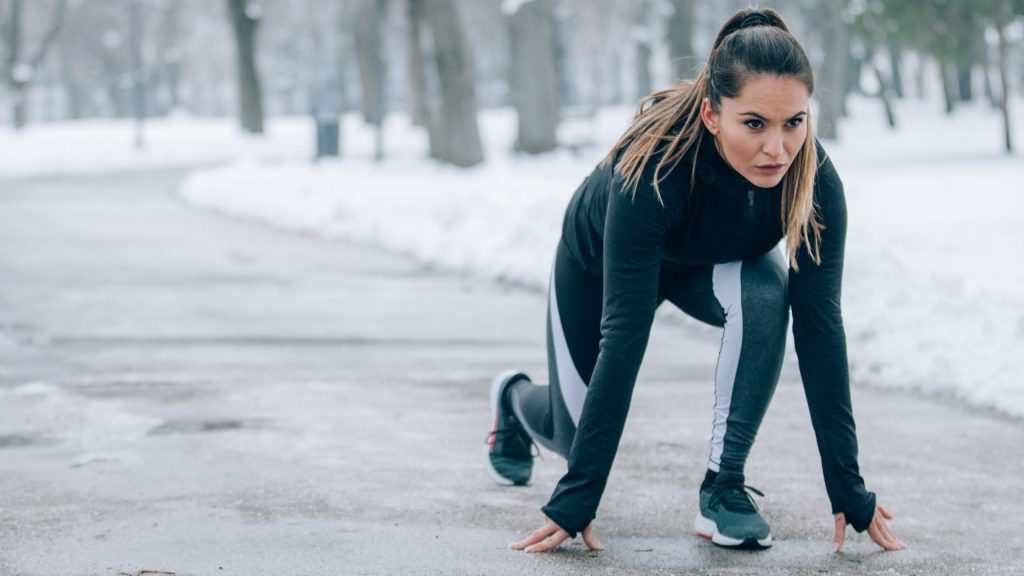Is cold weather creating hindrance in your outdoor fitness routine? Don’t put off going outside till spring.

The Times
No matter what time of year it is, outdoor exercise is beneficial to both your body and mind. Getting outside in the cold allows us to interact with nature, disconnect from the digital and physical worlds, and improve our focus and creativity. Exercise can help combat the winter blues, increase energy, and avoid weight gain during the time of year when most people add more insulation. Here we have listed 5 ways to exercise outside in winters, without thinking about cold-
-
Wear a ‘Dry’ dress. ‘Warm’ Isn’t Enough
Getting wet is the quickest way to lose body heat. Because water is an efficient heat conductor, transporting heat from the place of greatest concentration (your body) to the area of least concentration (cold air outside), becoming wet will rapidly leave you chilled and unhappy. If you’re chilly and wet, you’re more likely to cut your workout short, and you also raise your risk of hypothermia (when your core body temperature goes below 95 degrees Fahrenheit) or frostbite in cold weather.
Wet fabric on your skin can give you chill.
That means avoiding active apparel made of cotton, which absorbs perspiration and rain and retains moisture. He suggests using synthetic fibres that dry fast, such as polyester, nylon, and polypropylene. They damp roughly 50% faster than cotton.
-
Add Layers
Don’t limit yourself to sweat-wicking clothing. Layers are also necessary to trap warm air adjacent to your body and keep out the elements (such as rain, snow, and wind).Here’s how to dress for a winter workout: To begin, put on a thin base layer of synthetic textiles (described above) to assist drive sweat away from your skin. Wear a middle layer, such as polar fleece, for added warmth if it’s extremely chilly outside. Then, to protect yourself from wind, snow, and rain, add an outer layer (or shell).
Your outer layer can be a lightweight nylon windbreaker or vest, or a heavyweight, waterproof jacket, depending on the weather. It’s worth noting that the more water-repellent the shell, the less moisture from the interior (your perspiration) will be allowed to escape, even if you’re wearing the appropriate base layer.
-
Use Vibrant Colors
Although black is fashionable, colorful clothing is preferable for outdoor activity. Winter is not only colder, but also darker. It is more difficult for others to see you if there is poor visibility due to rain, snow, or overcast or dark sky. This holds true whether you’re sharing the road with other drivers or the trail or route with other snow sports enthusiasts.
Ridings recommends wearing brightly colored clothing and gear whenever possible, as well as purchasing reflective gear or blinking lights. Wearable flashlights are wonderful not only for letting people see you, but also for improving your visibility and preventing stumbles and falls.
-
Guard Your Extremities
Cold temperatures have the greatest impact on fingers, ears, nose, and toes because “blood is diverted to the center of the body, leaving less blood (and hence less heat) available to hands and feet.”
Wear a cap or headband, as well as gloves or mittens, to preserve your extremities from freezing. If you get too hot, you can always take them off and tuck them into a pocket. Thick socks are also beneficial. To assist keep sweat off your skin, all of these extras should be wool or synthetic rather than cotton. Men may also want to consider a decent pair of technical briefs, synthetic underwear, or extra layers if needed.
-
Take Care of Your Skin
Winter air is cold and dry in nature. Drink plenty of water (approximately eight 8-ounce glasses each day) and apply moisturizing cream or lotion to keep your skin from drying out, according to Ridings. For added protection, he suggests putting Vaseline to sensitive places such as the nostrils, tip of the nose, and ears. Consider wearing a jogging mask or scarf to keep the wind out of your face.






